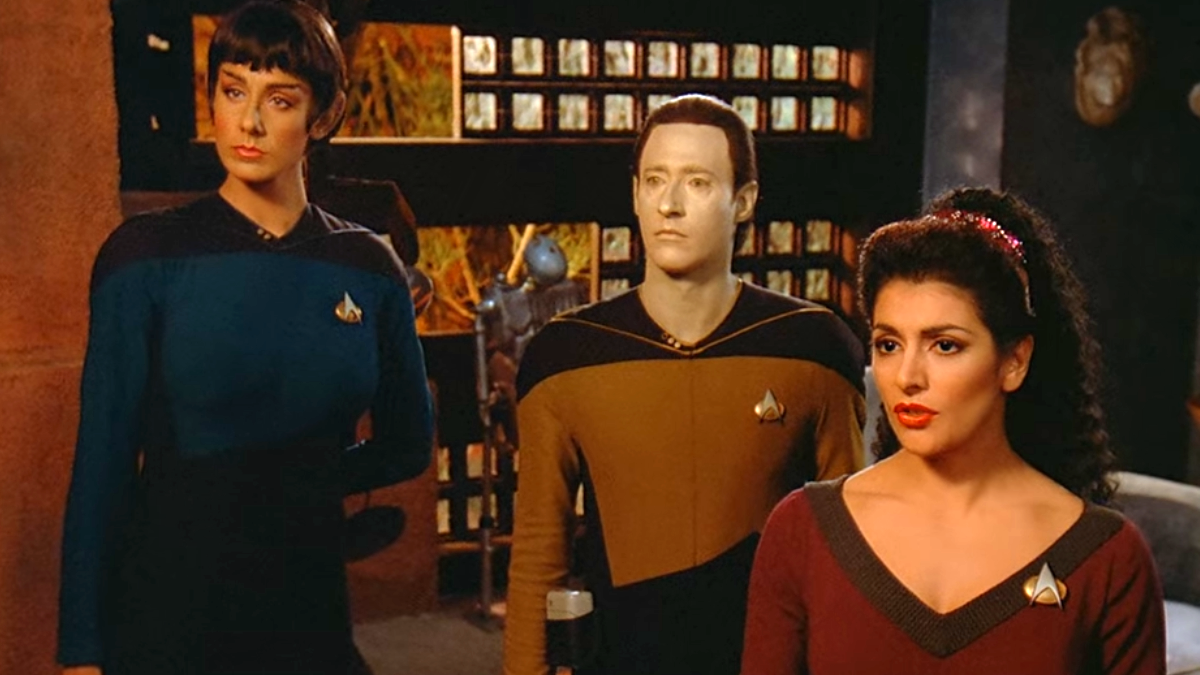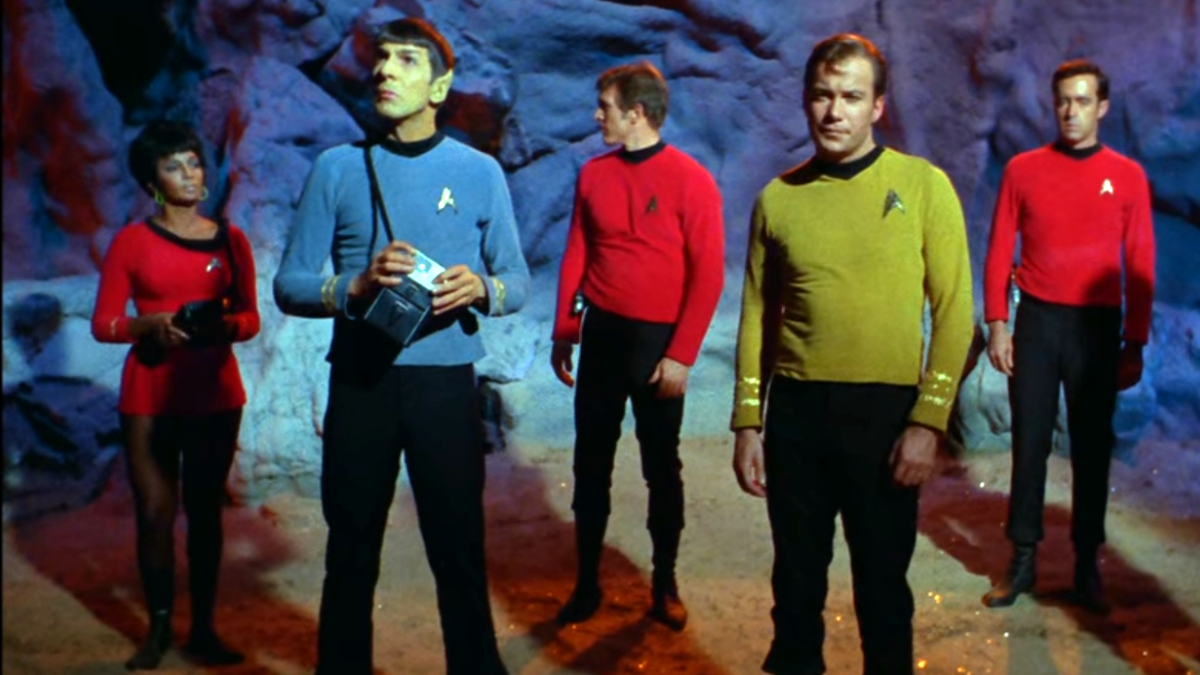Everyone knows the iconic Star Trek uniforms. The brightly-colored outfits amazed viewers seeing color TV for the first time in the 1960s and helped to define the unique aesthetic style of the Star Trek universe, becoming an instantly recognizable feature of the shows.
The 23rd Century

In The Original Series, there were three uniform colors. Each color represented a certain duty division aboard a starship or station. Gold, as worn by Kirk and Sulu, denoted the command division of Starfleet, which included most ranking officers and administrative personnel. Blue, as worn by Spock and McCoy, denoted the sciences division. This included researchers and medical staff. Red, as worn by Uhura and Scotty, denoted the operations division which covered a wide range of specializations such as engineering and security. Each color choice was bold and striking, meaning viewers could immediately tell what position any new character had in Starfleet.
The Original Series gave rise to the infamous phenomenon of “redshirts.” Security officers wore red shirts and would regularly put themselves in harm’s way. Enterprise crew clad in red were massively more likely to be killed than their counterparts in the other divisions. A redshirt’s life could be painful and short — they would be blown up by alien weaponry, plunge head-first into bottomless chasms, or even have all their red blood cells surgically removed by malevolent cloud creatures. Around 26 officers in red uniforms died during the course of the series’ three-year run. In the season two episode “The Apple,” four unfortunate redshirts are killed navigating a jungle deathtrap, being struck by lightning, shot by plants, and falling onto landmines. Even by the cruel standards of the show, this ranks as a bloodbath.
Strange New Worlds — set very shortly before The Original Series — keeps the same uniform colors, but adds a new one. A white uniform denotes someone working as a member of medical staff, but these were seemingly phased out in favor of standard blue uniforms by the time of The Original Series.
Star Trek: Discovery, a prequel series set a little further prior to The Original Series, introduced a new color-coding system. All uniforms were made of dark blue fabric, with division denoted by metallic stripes on the shoulders. These stripes were gold (command), silver (sciences), and copper (operations). These clothes were super-sleek but looked too much like Navy uniforms, and it could be hard to tell at a glance who was part of what division.
The 24th Century

By The Next Generation, the uniform colors had changed. While blue still denoted science and medical, the meanings of red and gold were inverted. No reason was ever given in-universe for this, but the real-world explanation is that Next Generation actors looked better in certain colors — Brent Spiner as Data, for example, was deemed to look far better in gold than in red or blue. The change also came partly as a result of the Star Trek movies of the 1980s, where all Starfleet personnel were shown to wear red uniforms (the fabric for the costumes took better to red dye). Kirk had been seen wearing red for the movies, so it was felt that audiences would come to associate red with command.
Whatever the century, series, or ship, Star Trek just wouldn’t be the same without everyone clad in brightly colored pajamas. Too many modern science fiction shows have their actors wear drab, dark, soulless uniforms. Strange New Worlds is proudly carrying on the multi-colored tradition set way back in 1966.

